On the fourth floor of the Bok Building, a handful of students are gathered in the airy, white-walled workshop space at Weaver House. Each person sits at their own floor loom, a large and elegantly complex machine constructed from blonde wood, strung across with fibers. The mood in the room is one of concentration, each person immersed in their own radius of methodical movement as their feet work the treadles (pedals) and their hands carefully guide the shuttle through the field of threads before them. An instructor travels from loom to loom, gently helping the students as their weaving creates a chorus of sounds that echo through the space.
The workshops here are an almost sacred space, where newcomers and long-time members of the city’s fiber and craft communities come together to learn the craft of weaving. People come from across the world to study at Weaver House, as it’s one of only five or so places on the East Coast — besides colleges and universities — to offer floor-loom education.
Classes are just one component of Weaver House; it also operates a yarn shop and an online store offering many kinds of yarn, looms, weaving accessories and educational materials. But the workshops are closest to owner Rachel Snack’s heart.
“I really enjoy teaching and sharing my passion with others, it’s one of my strengths,” Snack says. “I want people to fall in love with the craft.”
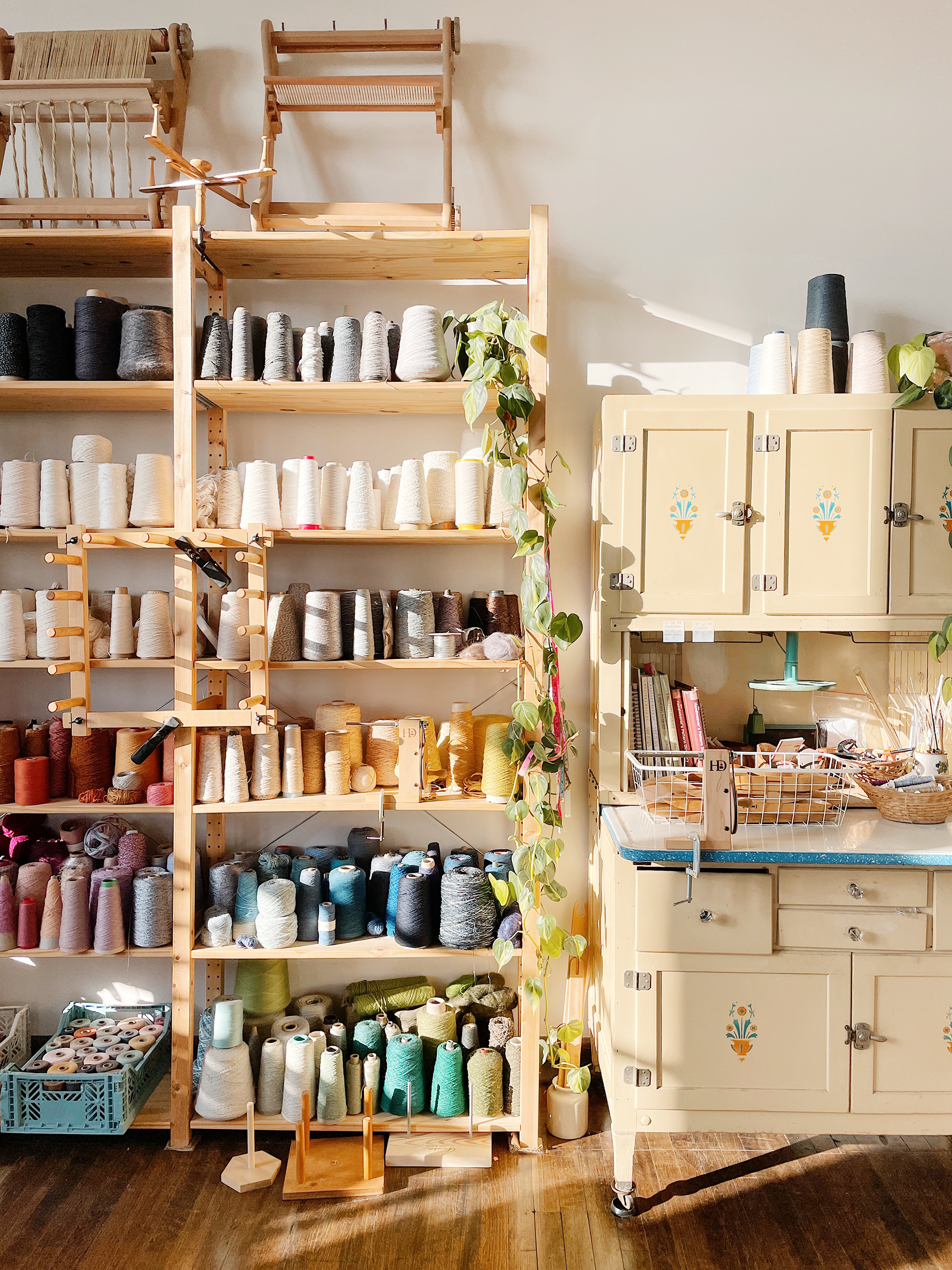
Snack, a textile artist and leader in the national weaving community, earned a graduate degree at Philadelphia University (now Thomas Jefferson University), one of the oldest textile programs in the country. After working as the creative director for a yarn company, she opened Weaver House in the fall of 2019 primarily as a studio and weaving school, with a small selection of goods to support the students’ projects. During the pandemic, sales of yarn skyrocketed, and she pivoted to include a larger retail operation.
The yarn shop, which is in another sun-drenched room on the second floor of Bok, is lined with cones and skeins of yarn in a gorgeous palette of colors both bright and neutral. While Weaver House carries lots of what Snack calls “workhorse” yarns, its true specialty is high-end, slow-made, handspun fibers, often produced by small cooperatives and family-run mills.
“There are so many alternative materials, like naturally-dyed hemp, braided jute, all sorts of linen and handspun raimie, and part of our ethos is teaching people how to work with those yarns,” Snack says. “You’ll never be able to find those fibers in a big box yarn store or even other yarn shops.”
Most yarn you do find in chain craft stores, Snack explains, is acrylic, polyester or a blend, all of which are essentially made of plastics. These are the same fibers that are found in fast fashion garments, which shed microplastics and last forever in landfills. Snack is quick to point out that she doesn’t judge folks for buying these yarns, and that, in fact, alternative natural fibers (which tend to be much more expensive) aren’t right for every level of weaver, or for every project.
If we just consume less in general, we can spend more to make one thing that will last for many years to come.”
— Rachel Snack, Weaver House owner
“As you become more passionate about the practice, you’re better able to see the tactile quality of synthetic versus natural and know when it’s appropriate to use what yarn,” she notes. “Like with fast fashion, if we just consume less in general, we can spend more to make one thing that will last for many years to come. And eventually when they’ve lived their lifespan, they can biodegrade.”
One sustainable fiber that Weaver House sells is kudzu yarn sourced from Laos. The plant, which is invasive here in the U.S. but native to Laos, is spun into shiny, thin, rope-like fibers. Snack developed a special pattern for a woven table runner to introduce her students and customers to kudzu.
“It helped them be less intimidated to work with kudzu and now they want to use it in everything,” she says. “For me, this is a touchpoint for what could be possible in the U.S. for turning that invasive plant into something useful and regenerative.”
Mindfulness is part of everything that Weaver House does. Weaving is extremely time-consuming and slow-moving (it takes Snack, an expert weaver, over 10 hours to weave a scarf). But instead of the slowness being a frustration, she insists that it’s actually the best part.
“It’s therapeutic to be present with yourself and the loom. It creates a rhythm with your body almost like a dance, and when you embrace that rhythm it becomes a really beautiful practice.”
Nguyet Chau, a Philadelphia-based interior designer, has taken a number of weaving classes at Weaver House since June 2023. She sees weaving as an extension of her design work and is learning to produce custom fabrics to fulfill her customers’ desires for original, one-of-a-kind textile pieces for their homes. In addition to the pleasure of creativity, Chau agrees with Snack’s claim that the snail’s pace of weaving is its secret power.
“I’m a doer, so I’m constantly moving, and weaving forces you to slow down,” she says. “It’s so grounding to work with your hands.”
Chau has taken workshops with a range of Weaver House’s instructors and is blown away by the way the staff, particularly Snack, helps weaving feel less daunting.
“Rachel is an incredible human being and artist, but as an educator she is incomparable,” she says. “She’s so inspiring, supportive and patient, and is a visionary weaver. Weaving seems to many people like something your grandmother did, but Rachel revolutionized it to be for younger people.”
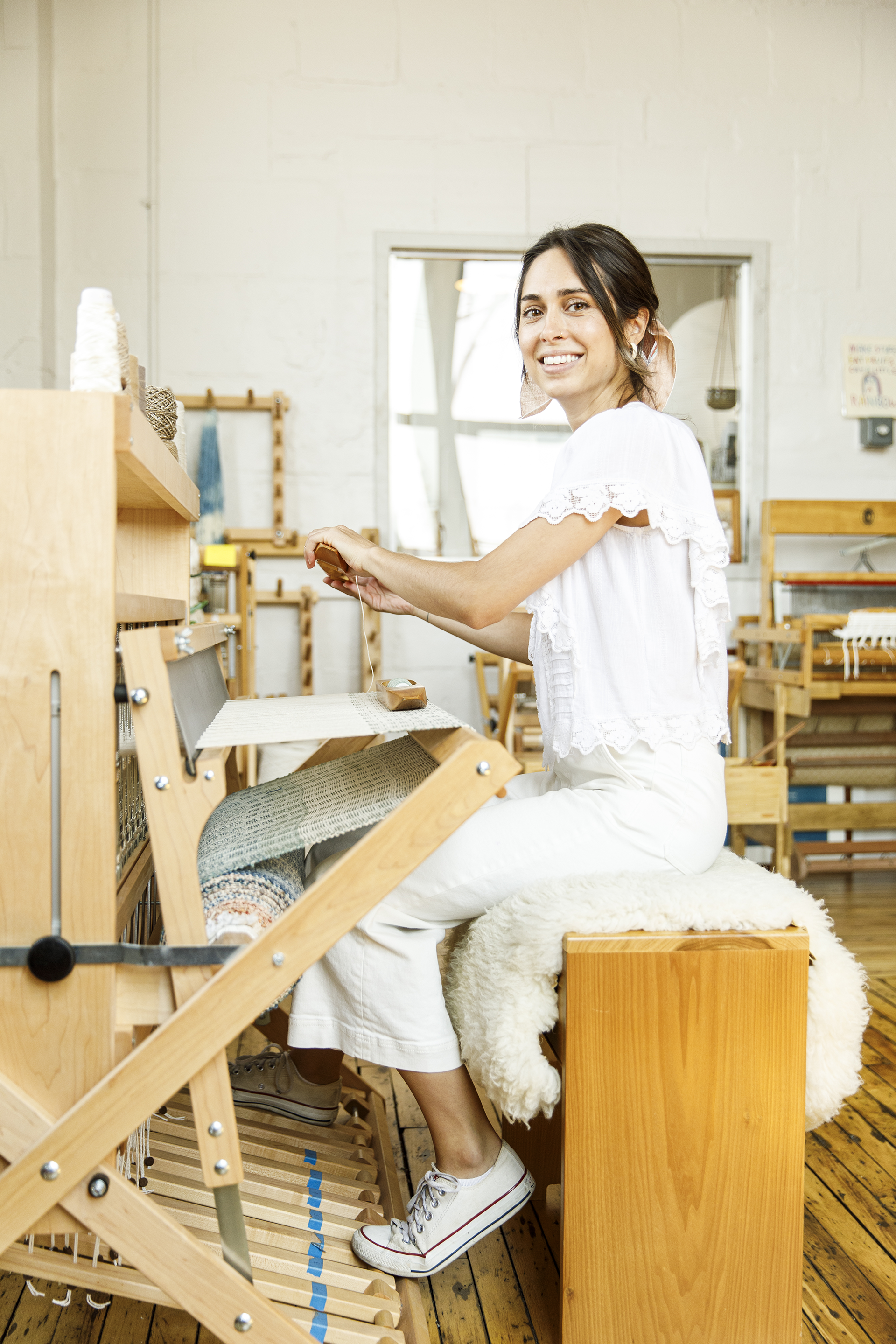
For Snack, everything at Weaver House, from the highest-level classes to the casual chats in the yarn shop, come back to fostering community.
“Weaving can be a solitary, isolating practice,” she says. “Being able to share and create dialogue in a place where you know everyone is obsessed with weaving is just really cool.”


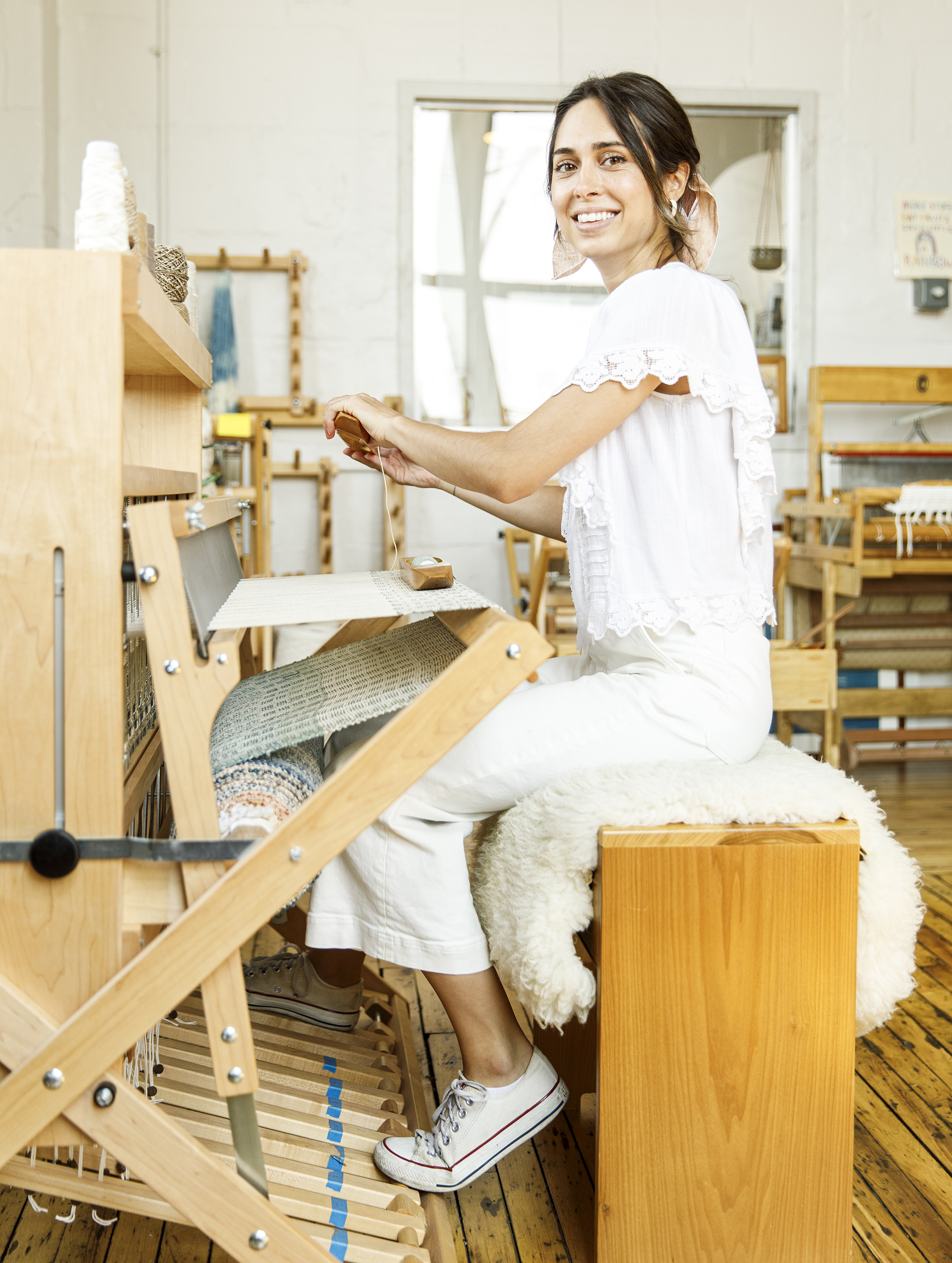
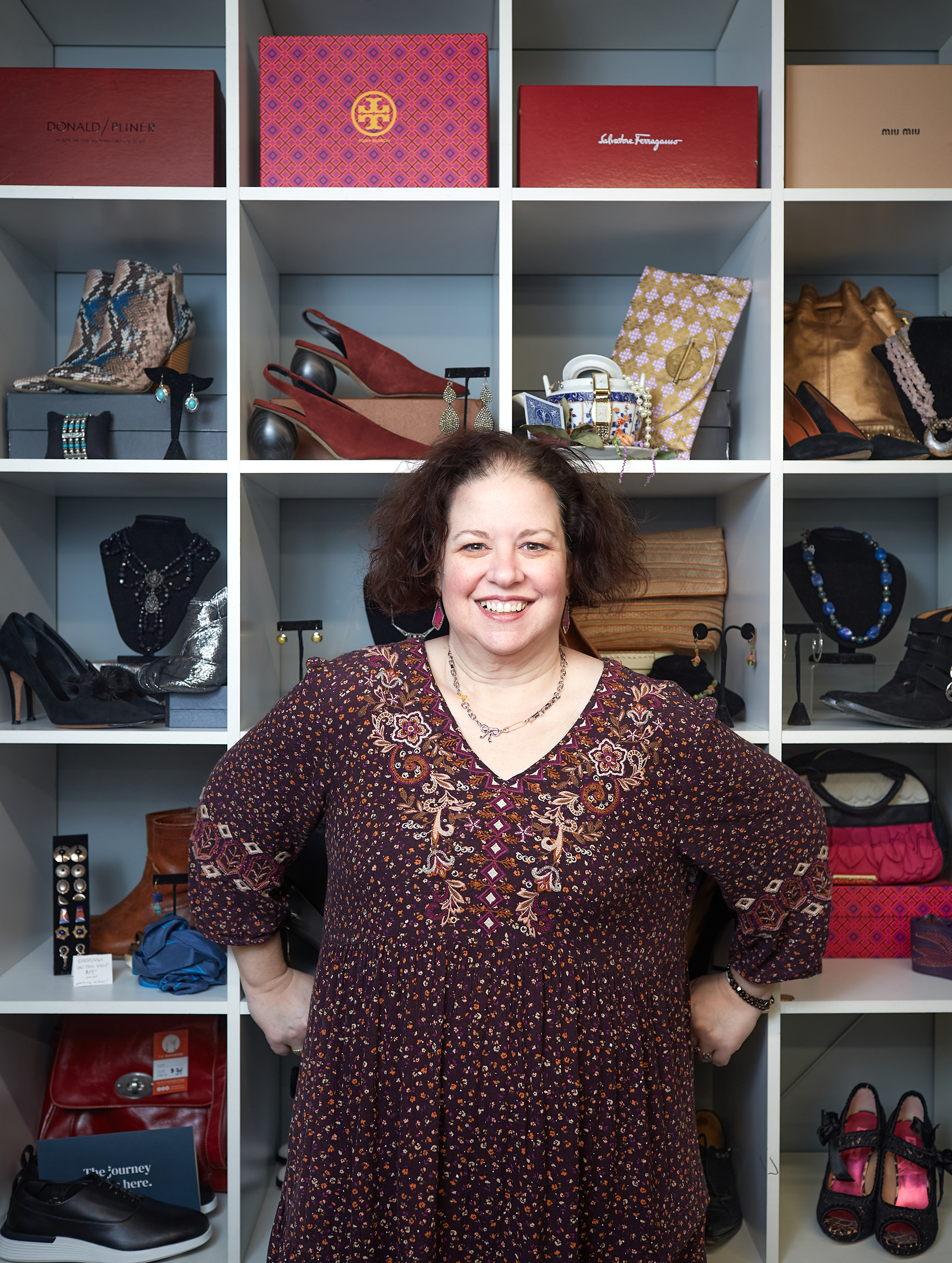
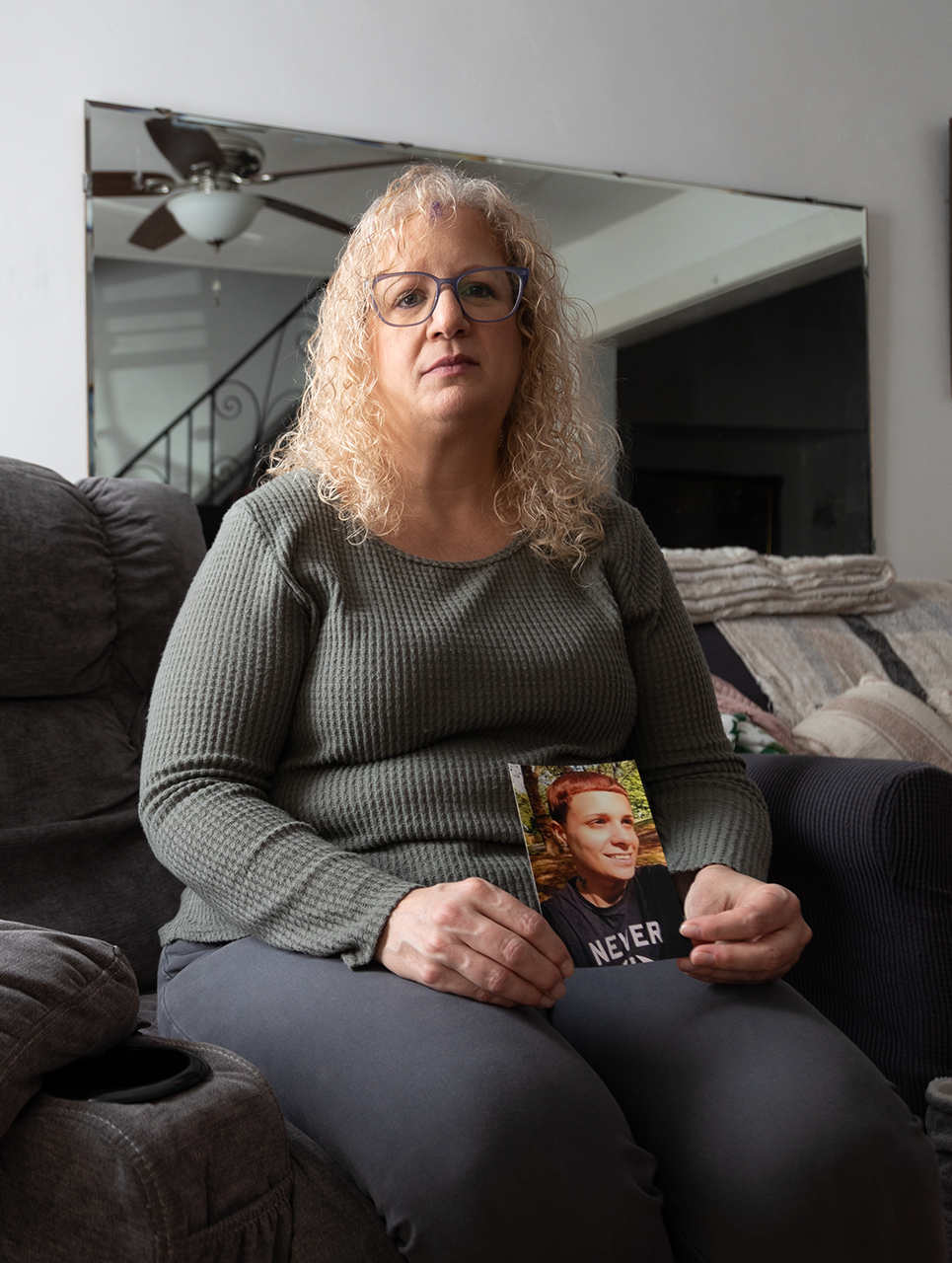



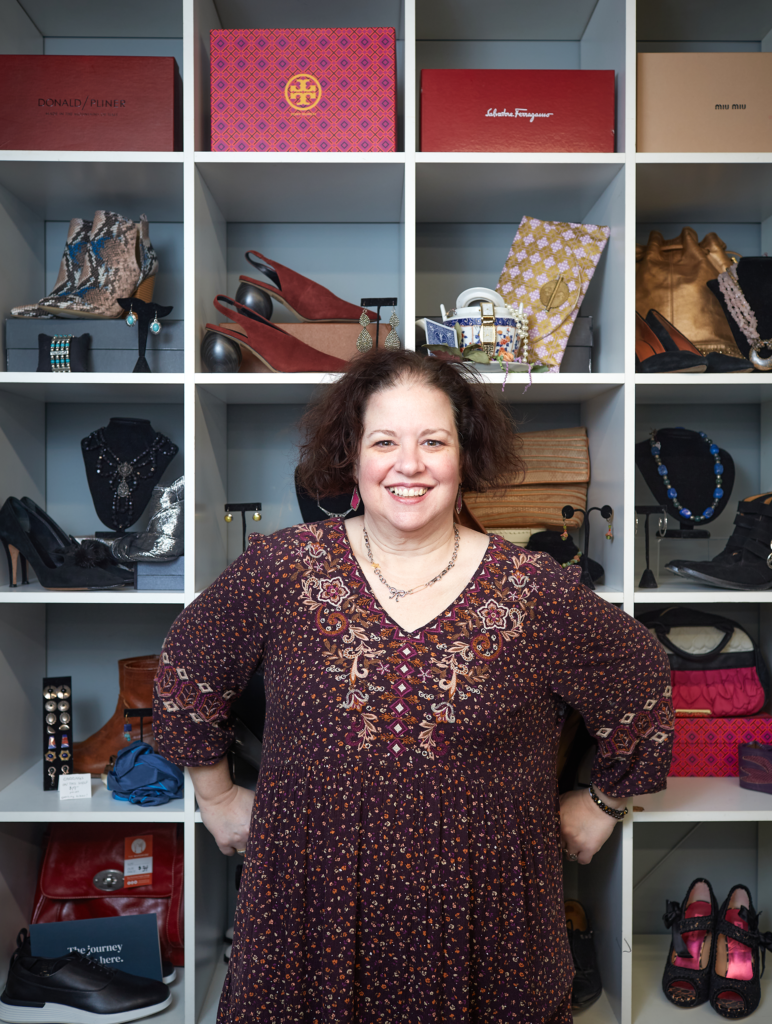
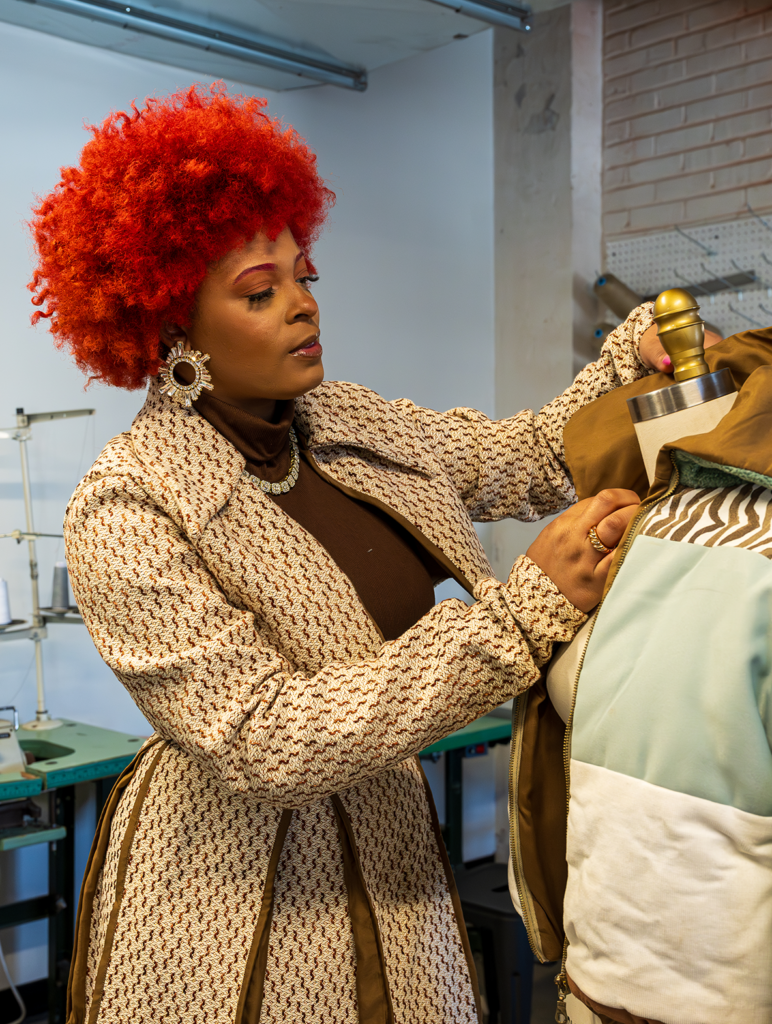
Wonderful article. I’ve been a weaver for over 25 years and agree with Rachael’s comment about it being therapeutic. Especially when you are “singing” your treadling sequence – it’s a sing song rhythm.
I am new to weaving and have purchased two of Rachel’s videos . Her videos are excellent and helped me learn how to warp my loom and also a variety of different techniques to apply to projects.
I’ve taken several of Rachel’s in-person courses and love to seek out unique natural fibers from her shop! Weaver House is my favorite fiber outlet! Exploring her shop is a lovely sensory experience! I am inspired when learning in her classes … both the classes she teaches and the classes that are taught by talented guest instructors. Weaver House Co has grown because of Rachel’s enthusiasm, passion, vision, & kindness. Her interest in sustainability in textiles should not be understated and influences the classes she offers. Her own artistry in creating with sustainable materials results in beautiful designs, both traditional and innovative. I sometimes wonder if Rachel’s own artistic practice could be that of a world class artist if she had more time to create (she’s that good!) but I’m immensely thankful she shares her knowledge & skills with others. There are many weavers like myself who had the opportunity in Rachel’s lovely studio and who put down our screens and weave. That’s good for the world!